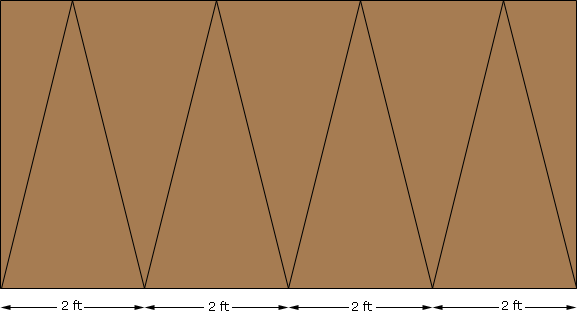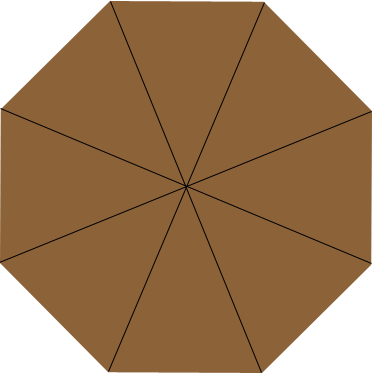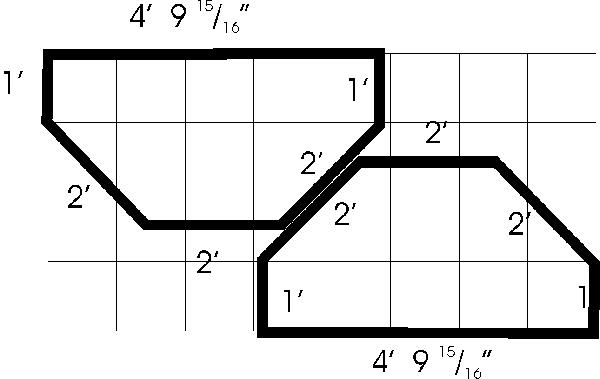| |||
| Math Central | Quandaries & Queries |
|
I'd like to build an octagonal poker table using 4'x8' sheets of plywood. I would like each side edge to be approx. 2' wide. I am sure that due to the angles I can do this with one sheet of plywood, but i don't know how to measure for this. |
Corey,
There are various possibilities. If you have a plywood with a nice, very straight, grain parallel to one side, and you don't plan to cover it, you could consider cutting seven triangles and two half-triangles as shown

and assembling them points-in over an appropriate frame; the grain will give a lovely octagonal pattern.

However the joinery in the frame below will be tricky. This might be better as a veneer pattern!
If you want a simple design for the frame underneath you want to keep the cuts few and symmetric. About the simplest would be in the diagram below.

This will also show off a strong but wavy grain (like most oak-surfaced plywood,in which the face veneer is rotary-cut) better than the pattern above will.
Note that the diagonal edges in the middle are each more than an inch away from the center. If you wish to use tongue-and-groove or some other routed edge pattern to make a strong permanent joint, you can easily push the top piece down and/or the bottom piece up to give a little extra wood along the long edge for jointing.
On the other hand, if storage is a problem, this design would work well for a tabletop that disassembles into two halves, with folding legs and an unglued lap joint.
Good luck!
RD
Corey wrote back
This is perfect, but I have one more question. How can you insure that the angles are all identical so that the octagon is symmetrical?
Corey,
If you are making RD's first design then I wouldn't measure angles at all. Mark 2 foot measurements down one side of the sheet and then on the other side 1 foot, 3 measurements of 2 feet and the 1 foot. Join the markings as in the diagram and cut along the lines.
If you are looking at RD's second design then the angle between the 4 feet 9 and 3/4 inch sides and each 1 foot sides is 90 degrees. All the other interior angles are 45 degrees.
Harley
 |
||
Math Central is supported by the University of Regina and The Pacific Institute for the Mathematical Sciences.